How to Get Your Caffeine Fix Without Going Broke – Eat Healthiest Foods
Ever wonder how much you’re spending every morning at Starbucks? It’s easy to justify each purchase when you’re only spending a few dollars each day. Even if you’re spending just $2 a day, four times a week, you’ll still have spent $6,149.98 after ten years. The cost of coffee adds up — but school and work fuel the need for caffeine. Here are some ways to save money without sacrificing your caffeine fix.
Make it at home
It seems like common sense, but making your coffee at home can save you a ton of money. A one-pound bag is usually around and $5, and makes about 48 cups (depending on the strength you’re looking for). This averages about ten cents a cup. If you’re spending $2 a day, you’ll be saving $1.90 per cup, totaling around $300 a year. Even though coffee makers can expensive, they’ll save you in the long run. Plus, you’ll have your choice out of the best coffee beans on the market. You can even buy bags from your favorite coffee shop! Preparing your coffee at night or in the morning while you’re getting ready will also save you time during your morning commute. Making coffee at home will keep you from stressing while waiting in line and hoping you won’t be late.
Stop splurging on more expensive drinks
It’s tempting to throw away over $4 on a fancier drink at Starbucks. Spending $5 a day adds up quickly to $35 a week, or close to $2,000 a year. Next time you’re at Starbucks, try ordering a plain coffee instead of your triple venti half-sweet non-fat caramel macchiato. You can add espresso shots to your coffee if you need the extra boost (you’ll still be spending less than that macchiato). Instead of splurging on more expensive drinks every day, buy them on special occasions to treat yourself (like after you’ve given a killer presentation).
Look for cheaper shops
Dunkin’ Donuts and Starbucks drive-thrus are convenient when you’re in a hurry, but they could be costing you. Do some research on coffee shops in your area that cost loss. Some local coffee shops can offer both cheaper and better quality coffee. When you shop local, the $2 you spend on that cup of coffee goes back into helping the community, not a global corporation. It also gives you the opportunity to sample authentic coffee in place of fast-food coffee. In addition, local coffee shops provide great atmospheres to study or work. Next time you’re looking for a good cup of coffee or a quiet place to hang out, try some local coffee shops.
Pay in cash
It’s well-known that swiping a card doesn’t create the same impact as directly handing your money away. By paying cash, you’ll become more aware of how much you’re spending. Psychologically, paying with a card encourages you to spend more money because you don’t see the result of how much you’re spending until your monthly statement comes. Behavioral economics studies further prove these assertions. One study found that people spend 12-18 percent more when paying with a card instead of cash. Reports from McDonald’s show that average tickets are $7 when people use cards, and $4.50 when people pay with cash.
Rushing to Starbucks to grab coffee every morning can seem like a chore — try making your coffee at home or getting to know the baristas at your local coffee shop instead. All in all, don’t forget to stay mindful of how much you’re spending on coffee, and remember how quickly small purchases can add up.
